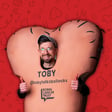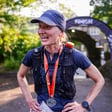
Dr Peter Gorman | Stuart Gordon
Dr. Peter Gorman is the president of Microgate USA who works with everyday runners and athletes as well as the world’s top athletes, team owners and doctors. He has multiple patents for heart rate monitors.
Stuart is the owner of all about balance and sports therapist of 30+ years as well as the UK distributor of barefoot science insoles.
We discuss:
Your gait / the runners gait cycle
Importance of proprioceptive stimulation
Better balance and why you should strive for it
Injury risk
Midfoot / forefoot running
How runners attempt to fly….and more!
For those of you attending run fest run or the national running show south you will be able to meet Stuart and watch his talks so go say hi!
If you haven’t already heard our previous podcast with Stuart and Dr Susie Cooper which has lots of plantar fasciitis tips in then do have a listen, that was episode #38.
Connect with Stuart and All About Balance on the links below.
Dr Peter Gorman on CEO Talks watch here



















